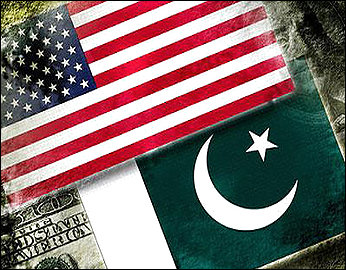
by Fawad Kaiser 25 July 2019
Despite having poured billions of dollars of aid into Pakistan’s economy and its military over the years, there is a general acceptability among scholars and policymakers that the United States exercises limited leverage in Pakistan. Although Afghanistan remains the centrepiece in US–Pakistan policy divergences, US frustrations often stem from the ineffectiveness of its aid-for-leverage policy, especially given Pakistan’s dependence on US military assistance. The limited US influence in Pakistan can best be understood within the framework of patron–client relationship and arms dependence. If the theory suggests anything, it is that various factors including US and Pakistan’s behaviour contribute in channelling the relationship towards its apparent demise.
What can states expect to receive in return for the military aid they provide to other states? Can military aid buy recipient state compliance with donor objectives? Analysing the effects of US military assistance on recipient state behaviour toward the United States raises this question. What influence military aid has on recipient state behaviour independent of any dyadic predisposition toward cooperation or conflict? With limited exceptions, increasing levels of US military aid significantly reduces cooperative foreign policy behaviour with the United States. Interestingly US reaction to recipient state behaviour is also counterintuitive; instead of using a carrot-and-stick approach to military aid allocations, recipient state cooperation is likely to lead to subsequent reductions in US military assistance.
The United States spends more than eleven billion dollars per year on direct military assistance to foreign governments. The American government expresses a wide variety of goals motivating their use of military assistance as a foreign policy tool. Frequently, US administrations have explicitly linked military aid or arms transfers to a quid-pro-quo expectation of compliance from a government. More generally, military assistance is expected to augment US national security by increasing recipient state cooperation with US objectives.
The relationship between US military aid and the level of foreign policy cooperation exhibited by the recipient states is best explained by three explicit theoretical models (Arms for Influence Lonely Superpower and Reverse Leverage). While the Arms for Influence model anticipates a positive and reciprocal relationship between levels of military aid and recipient state cooperation with the United States, the other two models highlight potential perversions in the aid-influence connection. The Lonely Superpower model predicts that increasing dependence on US military aid will create incentives for leaders to be less overtly cooperative with the United States to counter any perception that their foreign policy is dictated by a foreign power. The Reverse Leverage model anticipates that military aid recipients will exploit the fact that the United States relies on them to provide some specific good—and the availability of alternative arms suppliers—to defy the broader interests of the United States with impunity.
Analysis show that there is little evidence in favour of the Arms for Influence model: there is an inverse relationship between absolute levels of US military aid and recipient state cooperation, and there is no relationship at all between recipient state dependence on US aid and recipient state behaviour. Thus, while the Lonely Superpower hypothesis is on the right track by predicting an unorthodox relationship between aid and cooperation, it does not perform as well as some of the Reverse Leverage hypotheses when it comes to explain exactly what form such unorthodoxy would take.
In several ways, the Reverse Leverage model is quite accurate. States receiving military aid from the United States exhibit lower levels of cooperation than states that do not receive military aid. In the population of all states, higher levels of military aid appear to produce more defiant behaviour, and the United States does not always punish defiance with reductions in aid or reward greater cooperation with increases in military aid. Together, these results suggest that US military assistance is allocated for reasons that are largely independent of overall recipient state behaviour toward the United States. The Reverse Leverage model contends that military aid is delivered to states that the United States depends on for security reasons. Realizing their leverage over Washington, states that receive high amounts of aid are more able to engage in uncooperative behaviour than are states that the United States does not depend so heavily upon.
Clearly, the relationship between US military aid and recipient state cooperation is far from straightforward. The bulk of evidence pens a cautionary tale for policymakers; although military assistance may achieve the specific goals for which it was allocated, it appears to generate less cooperative behaviour from recipient states overall. US military aid levels may be more indicative of American dependence on recipient states than of US influence over client states. Contrary to the existing literature on foreign aid, military aid is neither a carrot nor a stick; US assistance given to Pakistan depends on for some foreign policy ‘‘good’’ and the United States will continue to provide such aid as long as that ‘‘good’’ is valued in Washington.
